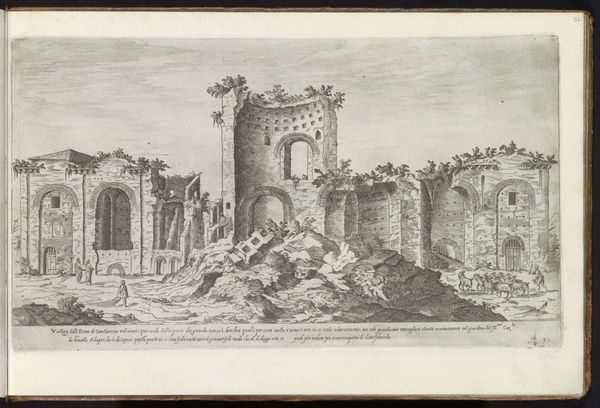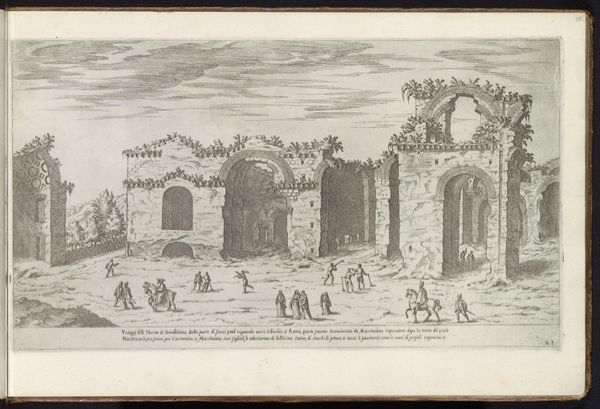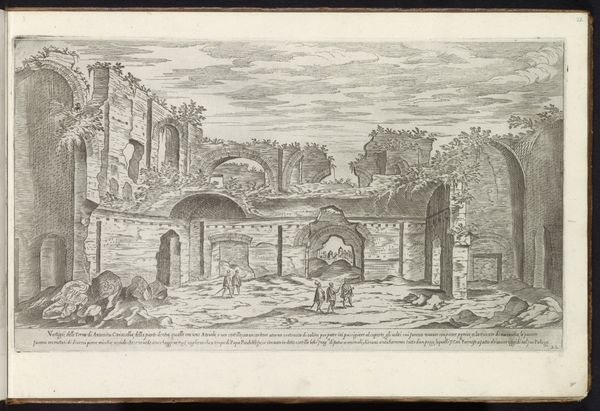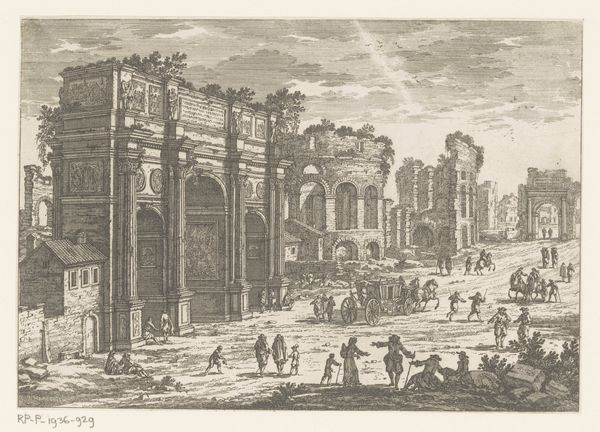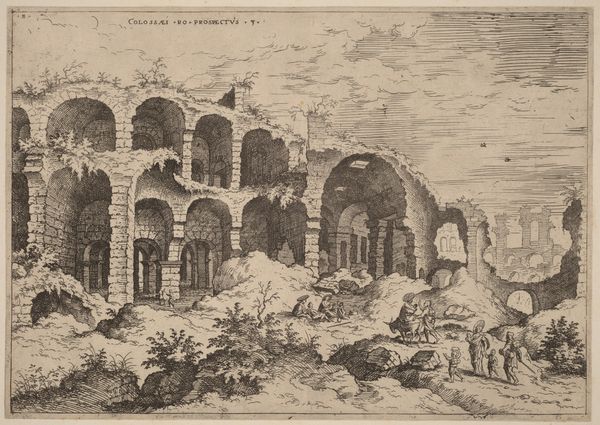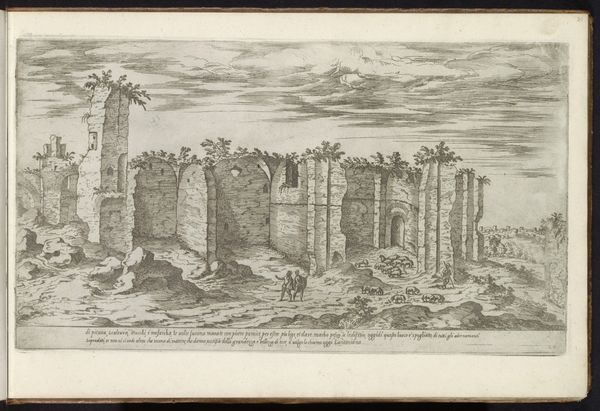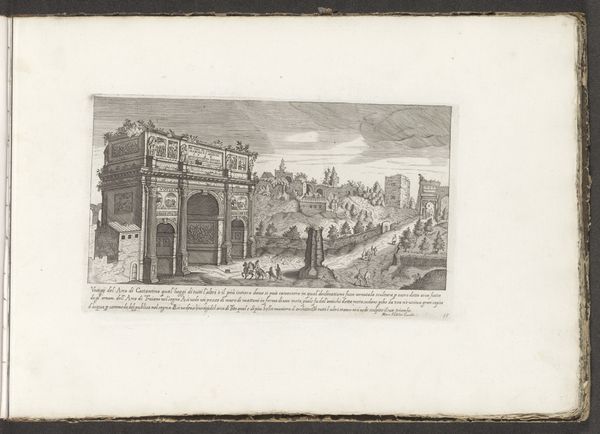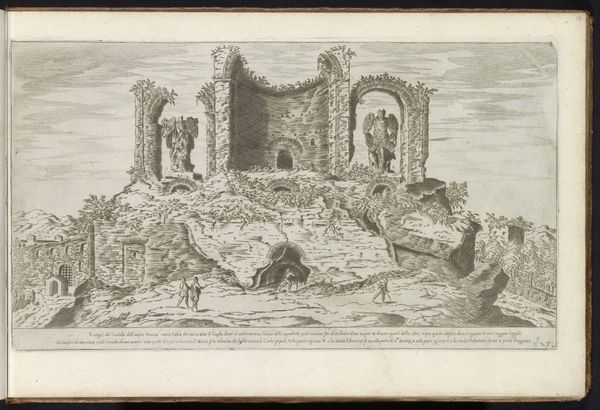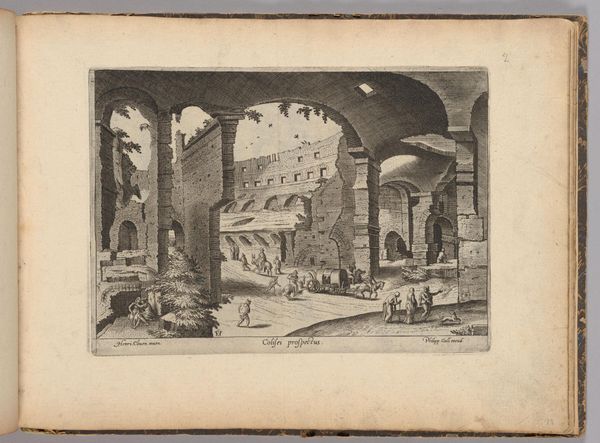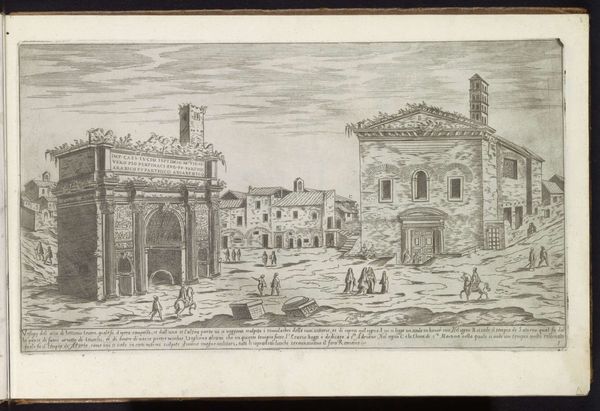
drawing, print, ink, engraving, architecture
#
drawing
# print
#
landscape
#
perspective
#
form
#
ink
#
line
#
cityscape
#
italian-renaissance
#
engraving
#
architecture
Dimensions: height 214 mm, width 381 mm
Copyright: Rijks Museum: Open Domain
This engraving, "Boog van Constantijn te Rome," by Étienne Dupérac, likely created in the late 16th century, presents a view of the Arch of Constantine rendered in precise lines and detailed textures. The composition meticulously balances the imposing structure of the arch with the surrounding Roman landscape, creating a dialogue between form and context. Dupérac's technique invites a semiotic reading, where architectural elements function as signs within a larger system of meaning. The arch, adorned with inscriptions and reliefs, signifies imperial power and historical continuity. The strategic use of perspective not only situates the viewer in relation to the arch but also engages with Renaissance theories of representation, where art serves as a window onto the world. The landscape, rendered with careful attention to detail, establishes a sense of place and historical depth, challenging fixed interpretations of classical grandeur by framing it within the contingencies of its environment. Ultimately, Dupérac's engagement with the Arch of Constantine uses form as a means to explore the complexities of history and representation, inviting the viewer to consider how such structures function not just aesthetically but also as cultural and philosophical signs.
Comments
No comments
Be the first to comment and join the conversation on the ultimate creative platform.
